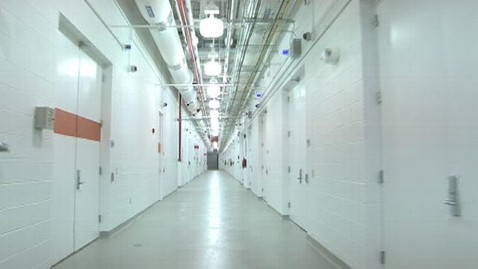Preventing Credit Card Theft + Inside Visa’s Top Secret Data Facility

ABC's Eric Johnson and Lauren Effron report:
'Tis the season to swipe the credit card - and to be on alert.
As shoppers rush home with their treasures, all purchased with just one swipe of a piece of plastic, it comes with one great risk: credit card fraud.
About eight million American were victims of fraud this past year, and almost half of those reports were linked to stolen card information.
"Right now criminal hackers are buying and selling our credit card information on the Internet," said Robert Siciliano, an identity theft expert and McAfee consultant. "It's very important that the consumers ultimately check their own statements frequently, especially during the holiday season and refute unauthorized charges to protect themselves."
But it's not just credit and debit cards that put consumers at risk. Siciliano said gift cards are often a popular target for thieves to commit common fraud.
"When [thieves] see a gift card on a display, what they'll often do it they can skim the information off the back of the magnetic strip," he said. "Once they do that they have enough information about that card that they can go ahead place an order over the internet or even over the phone."
Sicilano offered these tips for keeping your purchases on your plastic safe this holiday season:
1. Be Careful Where You Buy Gift Cards
"If you buy gift cards, I recommend buying them at, say, a mall kiosk, where one person behind that counter is responsible for administering that card," Sicilano said. "When you buy them from those racks that have a lot of different gift cards on them, then they're subject to tampering."
2. Check Your Credit Card Statements Regularly
"You have to pay very close attention to your credit card statement and I'd recommend weekly, especially during the holidays, and refute any unauthorized charges within a 60-day period of time," he said.
3. It's Safer to Use Credit Cards Online
"In general, you're more protected using a credit card on the Internet," Siciliano said. "Whereas if you walk into a brick and mortar retailer, you're handing that credit card to a human. Humans steal."
4. Look For 'Https' Websites When Shopping Online
"So when a consumer is using a credit card the most important thing to do is to make sure the website they're using is a secure one," Siciliano said. "That means that in the address bar where it says 'http' it should say 'https' - that means it's a secure encrypted site."
So what's on the other side of that unassuming black strip on your credit card that has the potential to be so dangerous? Turns out that before the sales clerk can even ask, "would you like a receipt," that transaction on your Visa card has already made it to Visa's giant data center - a place you have never heard of.
" Nightline" was granted exclusive access inside the data center, a facility so top-secret that its location cannot be found on Google maps and anyone who enters has to pass through more checkpoints than when you visit the White House. It was the first time television cameras were allowed inside.

Every single Visa transaction is routed though there, and Visa handles almost 8,000 global transactions a second during the holiday season. On Christmas Eve, that number hits 11,000.
Visa's data center building is strong enough to withstand a major earthquake or a tornado. It has its own water treatment system and generates enough power to support 25,000 homes. Outfitted with about 400 cameras just on the exterior, multiple layers of fences surround the facility.
Visa's global head of technology Mike Dreyer said the center's first line of defense inside is what the company calls "The Man Trap" - no one makes it through without a special badge and a fingerprint match.
These extreme precautions are in place because on the other side of those doors is a hacker's dream and an identity theft victim's nightmare.
Watch ABC's Cecilia Vega's "Nightline" report from inside Visa's data center: